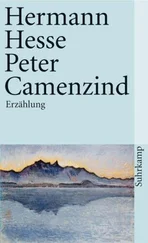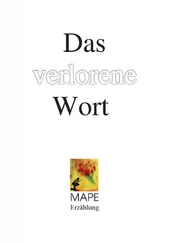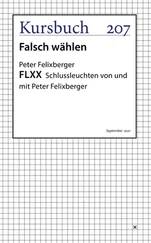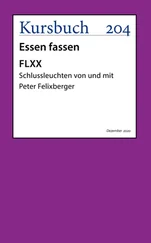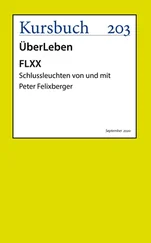The big yellow envelope was propped against the front door. She’d half expected it. She put it on the dining room table and poured herself a glass of white wine. She sat there, staring at the package, afraid to open it. Her name and address were care fully printed in black ink in Prable’s distinctive handwriting.
Elizabeth checked her voice mail. One of her graduate students had called twice, a kid from New York who was sweating through his dissertation. He was working on an analysis of fault slippage during the 1995 Kobe earthquake. The port city in Japan had taken a bad hit, a magnitude 7.2. Along with the Northridge quake, it was a frightening example of what could happen if a moderately big quake struck near a large city. The damage in Kobe was far worse than what had happened in Los Angeles.
Elizabeth took another sip of wine and sat down at the table. She opened the envelope and took out a videocassette, two high-density computer disks, and a single sheet of white paper folded in half.
A key was taped to the paper, on which Prable had written:
Elizabeth, please watch the enclosed video. Joanne operated the camcorder so forgive the occasional lack of focus. All of this, I hope, will be self-explanatory. If you wish to pursue the matter, my papers and the computer system on which I based my analysis are in my office. The key opens the door.
I only recently completed these calculations. If I hadn’t been so sick, I would have sounded the alarm myself, done whatever was in my power to bring this information to the right people. It wouldn‘t have been easy. The USGS, as you know, can be incredibly obtuse. But I would have tried. The cancer has changed everything. I’m too tired.
I’m sorry to draw you into this, Elizabeth. If you find my analysis accurate and choose to do something, it will be incredibly risky. You will be attacked in ways you can’t imagine. If I’m correct in my risk assessments, you don’t have much time. Good luck and a thousand blessings.
Prable
Elizabeth slipped the video into her cassette player and sat down. When it started, Otto Prable was slumped in a chair. He wore a dark suit and tie, the same suit he’d worn when he took his life. His face was ghastly. Hollow cheeks, deep-set eyes that peered out from the sockets. His skull showed through his skin.
Holding a clipboard on his lap, he smiled at the camera.
“Hello, Elizabeth,” he said, clearing his throat. “I don’t have much strength and I tire easily, so I want to get right down to business. Joanne is recording all this. Joanne, say hello to Elizabeth.”
“Hello there, Elizabeth,” his wife said in a light, almost musical voice. “It’s bad enough I have to listen to Otto. Now I’ve got to film him.”
It was so strange for Elizabeth to hear Joanne Prable speak her name. She kept picturing her as she lay on the floor of her bedroom. Elizabeth had to force herself to put the image out of her mind.
There were so many other memories of the Prables: party hosts, intrepid tour guides to northern California, and ballroom dancers. They’d taken up dancing fairly late in life, when Joanne thought it would help her husband get his mind off recent prostate surgery. They were both naturals on the dance floor and were soon winning state competitions, even giving lessons. Elizabeth had gone to several dance contests and marveled at how sexy they looked together, Joanne in a tight blue lamé gown with a daring slit skirt and her robust husband in a white tux. That image lingered, as did the many times she’d met them casually. Joanne loved literature and art and was continually forcing Prable to read her latest best-selling discovery. A beautiful couple.
Now she saw Prable sitting in what looked like his front room. A large fireplace was off to the side.
“Elizabeth, you know what I do,” he said. “I’m a climatologist. I analyze long-range weather patterns and make predictions on how changes in the weather affect agriculture, the amount of grain shipped from the Midwest, or the need for more heating fuel during an unusually cold winter. As a consequence of my work, I’ve become interested in solar activity. The impact of sunspots and other solar events on our planet and on our weather cycles. More out of curiosity than anything else. At least that’s how it started. I began to plot earthquakes according to periods of peak solar activity and found some curious relationships. The eight greatest quakes on record in this century, starting with the San Francisco quake of 1906, all happened at times of extreme solar activity.
“I also plotted,” Prable said, checking his clipboard, “these large quakes according to the earth’s position relative to the sun. Most happened during perihelion, the period when the sun is closest to earth. The bigger quakes tend to bunch up in the months of December and January and close to perihelion. The northern hemisphere was especially vulnerable, possibly because perihelion falls there during the winter. These were also periods of high tides, and as you probably remember I’ve spent a lot of time these last few years looking at how the tides affect our weather.
“I find it extremely interesting that the data from the Apollo space missions to the moon show all kinds of lunar earthquakes happening at perigee, the point where the moon’s orbit is closest to the earth. That’s also a time of maximum tidal pull, and if I’m correct in my analysis, the period of maximum earthquake stress. Clusters of quakes, some of them huge, happen during periods of strong solar activity and tidal pulls.”
Prable looked up and stared directly into the camera. Elizabeth gave a nervous start. He seemed to be staring straight into her eyes.
He managed a weak smile. “I know what’s probably running through your mind about now, Elizabeth. You’re thinking, ‘Oh, God. Not another tidal stress theory to explain earthquakes.’ I understand your skepticism. I felt the same way until I started looking at where these solar and tidal forces were most likely to have some impact. I concluded that a band of latitude running from roughly eighty-two to ninety-three degrees north will be subject to extremely strong tidal forces on or about January twentieth. Then I began to plot areas where stresses were building on known earthquake faults. Weak, unstable places that might be susceptible to tidal triggering. I ran my own computer analysis. Information from the Global Positioning System was especially valuable. The GPS readings showed me how the topography of an area had changed over time—land movement, uplift, and compression. I was able to compare horizontal and vertical displacements with land surveys from the fifties, your basic topo maps. That helped me identify faults where the crust had shifted the most, where stress was building.”
Elizabeth had recently begun using GPS readings in her own work. Geologists had only recently begun to use the satellite system to map topography. The measurement system was based on triangulation. The precision was breathtaking. Locations down to a couple of millimeters could be pinpointed from space. It was possible to track how the earth’s crust was moving and changing from one year to the next.
“My conclusion from all this, Elizabeth, the reason I made this tape for you, is that I believe there’s a good chance for a serious quake, possibly a magnitude 7, somewhere in the New Madrid Seismic Zone. The topography data shows an unusually heavy buildup of stress there. My projections indicate the greatest likelihood for such a quake will be during a period two or three days on either side of January twentieth. What makes the New Madrid fault particularly interesting to me is its history.
“As you know, it’s produced some of the strongest earthquakes ever to happen in the northern hemisphere. These tremors happened after almost two years of virtually no sunspot activity whatsoever. We’ve just gone through a similar period. It’s only been in the last three months that the solar flares and sunspots have picked up again. Heavy solar activity is predicted for January sixteenth. That’s four days before the date of maximum tidal pull.”
Читать дальше


